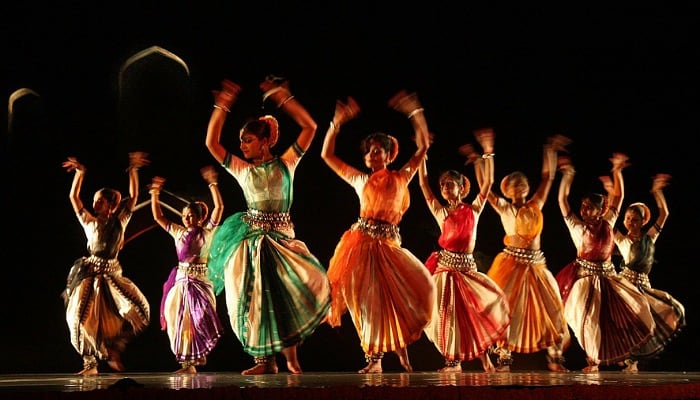The national capital is a fusion of various cultures and heritage, making it one of the most unique cities in the world. The people of Delhi are fond of fine arts, music, and more. With a rich history, diverse culture, traditional crafts, vibrant celebrations, and impressive architecture, let’s explore the art and culture of the city.
History of Art and Culture in Delhi
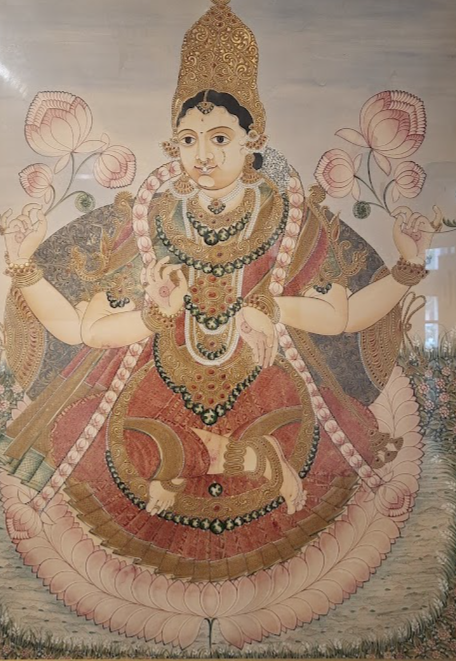
The city has been a centre of power and culture for centuries, with many dynasties ruling. Each of these dynasties left behind its mark on Delhi’s art and culture.
The Mughal Empire, for instance, had a significant impact. The Mughals introduced Persian and Central Asian art forms, such as miniature painting and calligraphy, which had a lasting influence on Indian art. Matia Mahal is one such example. Carpet weaving was also prominent in those times and is still prevalent.
During the British colonial period, Delhi’s art forms were influenced by European styles. The British built several impressive buildings, such as the Parliament House and the India Gate, which blended European and Indian architectural styles.
Also, the freedom movement brought in poets and artists. Nanda Lal Bose, Raja Ravi Verma, and more were prominent artists of the time, and their works can be found in the National Gallery Of Modern Art.
Traditional crafts of Delhi
There is a plethora of crafts work found. Here are some of them:
I. Pottery
Delhi’s potters create a wide range of pottery, including earthenware, stoneware, and terracotta. The best souvenirs to bring home are made of terracotta pottery. Some well-known terracotta objects are cutwork lamps, long-necked surahis (water pots), gamle (flowerpots), pitchers, and cups in different sizes and forms.
II. Zari and Zardosi Work
Zari, made of gold, and zardozi embroidery, used in Delhi and a few other Indian towns, are both forms of embroidery. The production of saris on India’s handloom and power looms uses zari threads. For zari work, actual silver thread, gold-plated thread, or an artificial thread with a copper base and gold or silver colour are used.
III. Craft With Paper
The most popular paper craft is Tazia. It is a piece of tribute paper carried in the Moharram procession and is made up of coloured paper scraps that have been adhered to a bamboo frame. Through the Phoolwalon ki Sair, celebrated every September in the capital, tazias are employed for a more joyful reason as well.
Effigy-Making is another paper craft that requires a lot of labour. When the Hindu festival of Dussehra rolls around, the actual work of this craft can be seen. Enormous statues of Ravana, Kumbhkarna, and Meghnath are erected and then set ablaze to symbolise the triumph of justice over evil.
IV. Shellac Bangles
The two primary Indian regions that are recognized as the birthplace of shellac art are Delhi and Rajasthan. They are glistening, brightly coloured bangles that are frequently embellished with glass gems, foil, spirals of base metal wire and spangles.
V. Leather Work
The leather work gained prominence during the Mughal era. The articles that gained traction were the traditional leather jooties, or cultural shoes and slippers, which were occasionally adorned with pearls, gold, and silver. Other in-style things were puffs or pidis, leather seats, shoes, and leather clothing with embroidery.
VI. Jewellery
The art took on a distinctive character by incorporating floral themes and intricate geometric patterns woven into exquisite jali (web) work. The elephant with the hoodah is another creation of Delhi’s artisans; the entire construction is made from a single piece.
Two very unique types of jewellery that the Mughals used as art forms can be found in Delhi. During the Mughal era, Hindu and Muslim cultures’ fusion resulted in various styles. It was also at this time that the art of Kundan was brought to India.
Culture of Delhi
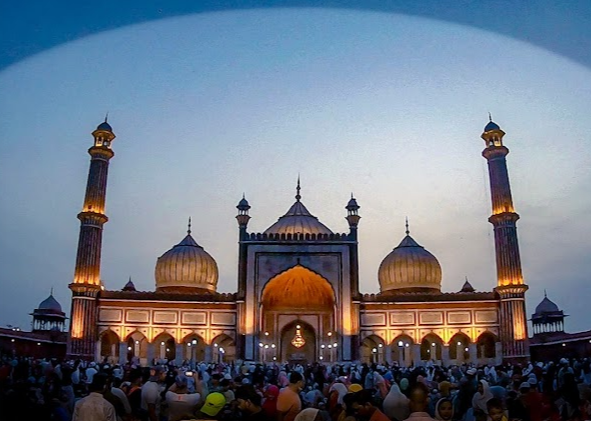
Delhi’s culture is a blend of old and new, traditional and modern. The city has a vibrant music and dance scene, with classical music and dance forms, such as Hindustani classical music and Kathak, and popular forms, like Bollywood music and dance. The city is also famous for its street food, which includes dishes like chaat, chole bhature, and paranthas. The city’s markets and bazaars, such as Chandni Chowk and Sarojini Nagar, are famous for their colourful and bustling atmosphere, where you can find everything from spices to clothing to electronics.
Festivals and Beliefs
Delhi’s religious beliefs are diverse, with people following Hinduism, Islam, Sikhism, Christianity, and other religions. The city has several important sacred sites, such as the Jama Masjid, Akshardham Temple, the Lotus Temple, and the Gurudwara Bangla Sahib. Regardless of where one comes from, one can participate in a Chhat Puja, Durga Puja, Ganesh Chaturthi, Diwali, Lohri, or Eid.
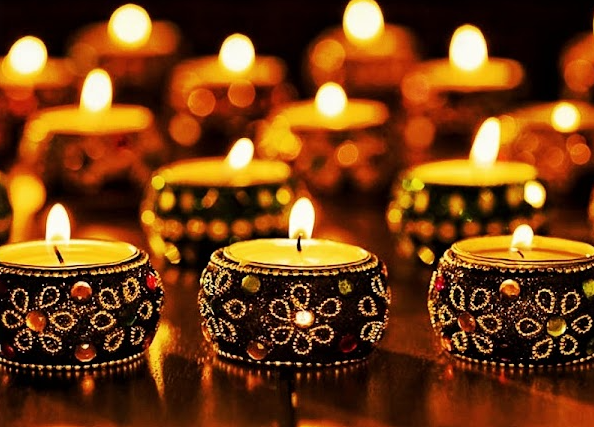
Fashion
The city is famous for its traditional clothing, such as sarees, salwar kameez, and lehengas, which are often worn during weddings and other formal occasions. The city’s markets, such as Chandni Chowk and Lajpat Nagar, offer a wide range of traditional clothing options.
In recent years, Delhi has also become a hub for modern fashion too, with several high-end fashion stores and designer boutiques. The city’s fashion industry has grown rapidly, with several fashion weeks and annual events. Modern clothing styles such as Western, fusion, and Indo-western have also become increasingly popular.
The best part about the city is that it is open to all types of fashion, whether traditional or modern clothing.
Lifestyle
The people here are known for their warmth, hospitality, love for food, and socializing. The food scene is a mix of all the cuisines in the world, with street food being a major attraction. The city is famous for its momos, chole bhature, cop gappe, butter chicken, and paranthas and has several world-class restaurants and cafes, including Michelin stars.
Transportation in Delhi includes the metro, buses, auto-rickshaws, and taxis. The city’s metro system is one of the best in the country and has made commuting easier for its residents.
Food
The city has several world-class restaurants, cafes, bars, authentic food joints, and street vendors. The famous Moti Mahal is here, where people from all over the world throng for their renowned butter and tandoori chicken. As mentioned earlier, the city also has restaurants owned by Michelin stars, such as Jamie Oliver’s Italian restaurant and pizzeria.
Apart from the top-notch restaurants, the streets of Old Delhi boast of its authentic nali nihari, butter naan, wazwan, dal makhani, paneer delicacies, and more.
People are fond of bhel puri, gol gappe, and papdi chaat, served with sweet and tangy chutney, freshly chopped onions and curd. Lastly, one must never miss out on the veg, and non-veg Tibetan momos served with spicy hot sauce and mayonnaise.
Architecture
One can find a mix of European structures, with a touch of Mughal architecture in its buildings. The inner circle at Connaught Place, a popular place in central Delhi, has English architecture, while the Red Fort holds Mughal architectural design. The city is spread with minarets standing in the middle of roundabouts. One famous structure of this kind is the Sabz Burj, which is beautifully blue and sparkles at night with lighting.
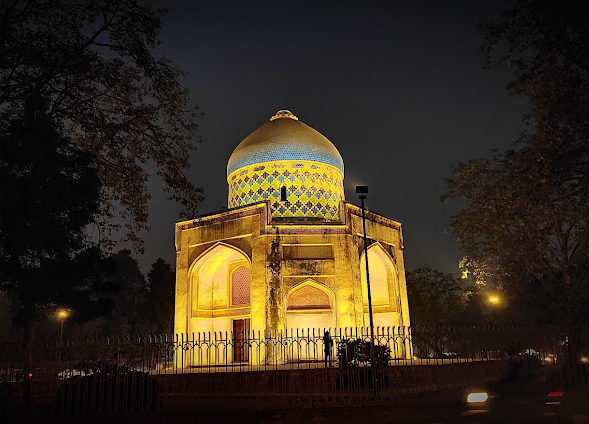
In Old Delhi, the street network reflects the defence needs of an earlier era. Few transverse streets connect major gates, while subsidiary gates lead directly to the principal axes. Most roads in Old Delhi are irregular in direction, length, and width, with narrow and winding paths, culs-de-sac, alleys, and byways forming a complex network accessible mainly by foot traffic. Conversely, in the north, Civil Lines (initially built for senior British officers) and the south, New Delhi offer relative openness with green grass, trees, and a sense of order in their residential areas.
Overall, Delhi’s architecture is a reflection of its rich and diverse history and serves as a testament to the city’s cultural and artistic heritage. Delhi’s vibrant art and culture are not only celebrated through festivals and events but also promoted through diverse mediums, including informative flyers that showcase the city’s rich heritage and creative offerings.
Parting Words
The city boasts a mix of ancient and modern styles in its architecture, a fusion of traditional and contemporary fashion, a blend of traditional and modern cuisines, and a lifestyle that reflects the warmth and hospitality of its people. Delhi’s art and culture are also celebrated through various festivals and events that showcase its music, dance, and other art forms.

